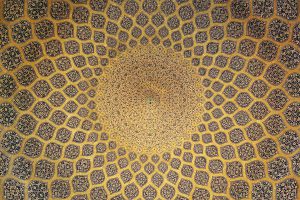Introducing Ẓāhir al-Riwāyah
By Mln. Abrar Habib (Takmīl Graduate, 2019)
Ẓāhir al-Riwāyah is a term that one researching in the subject of Ḥanafī Fiqh will frequently come across. Ẓāhir al-Riwāyah may also be referred to as ẓāhir al-madhhab or ẓāhir al-uṣūl. In this writing, I shall introduce and define it.
Ẓāhir al-Riwāyah are the masāʾil that have been related from Imām Abū Ḥanīfah, Qāḍī Abū Yūsuf, and Imām Muḥammad. These three individuals are known as “al-aʾimmat al-thalāthah.” Narrations from Zufar b. al-Ḥudhayl, Ḥasan b. al-Ziyād, and Imām Abū Ḥanīfah’s other students are occasionally included too. However, the term mostly refers to the rulings narrated from the three founding imāms.[1]
Ẓahir al-riwāyah is narrated via Imām Muḥammad through mass-communicated transmissions.[2] The reason why it is restricted to Imām Muḥammad’s books is because he is the only scholar from Imām Abū Ḥanīfah’s students whose books reached that threshold. However, there is a difference of opinion regarding which books, as well as the number of books, that are included in it.
They are:
(1) Ẓāhir al-Riwāyah consists of six books. They are al-Aṣl, al-Jāmiʿ al-Ṣaghīr, al-Jāmiʿ al-Kabīr, al-Siyar al-Ṣaghīr, al-Siyar al-Kabīr, and al-Ziyādāt. Ibn Nujaym,[3] Taḥṭāwī,[4] Ibn ʿĀbidīn,[5] and Laknawī[6] held this opinion.
(2) Ẓāhir al-Riwāyah consists of five books. They are al-Aṣl, al-Jāmiʿ al-Ṣaghīr, al-Jāmiʿ al-Kabīr, al-Siyar al-Kabīr, and al-Ziyādāt. Ibn al-Kamāl Pāshā, Ṭāshkubrī Zādah, Taqī al-Dīn al-Tamīmī,[7] Birī Zādah,[8] Ḥamawī,[9] and others held this opinion.
The scholars agree that al-Siyar al-Ṣaghīr is a part of the ẓāhir al-riwāyah while there is a difference of opinion regarding whether it is an independent work. Those who maintained the first opinion considered it to be its own independent book and not part of al-Aṣl. Below are a few reasons for why it is more accurate for it be considered part of al-Aṣl.
– Ḥākim al-Shahīd’s Kāfī is an abridgment of Imām Muḥammad’s Aṣl. Ḥākim al-Shahīd refered to the chapter of Siyar that comes in his Kāfī as “al-Siyar al-Ṣaghīr.” Thus, he indicated that Imām Muḥammad’s al-Siyar al-Ṣaghīr is a part of his Aṣl.[10]
– When passages from Imām Qudūrī’s commentary on Mukhtaṣar al-Karkhī are compared with al-Aṣl, Qudūrī is found citing from al-Siyar al-Ṣaghīr. And his citations are identical to the passages from al-Aṣl.[11]
– Most early scholars never mentioned al-Siyar al-Ṣaghīr separately when mentioning what constitutes the ẓāhir al-riwāyah. The reason for this is that they never considered it to be separate from al-Aṣl.
(3) Ẓāhir al-Riwāyah consists of four books. And there are two opinions regarding which four.
(3.a) The four books are al-Mabsūṭ, al-Jāmiʿ al-Ṣaghīr, al-Jāmiʿ al-Kabīr, and al-Siyar al-Kabīr. Jurjānī held this opinion.[12]
Regarding Jurjānī’s opinion, if he intended to confine the ẓāhir al-riwāyah to these four books, I would consider that anomalous. The majority included al-Ziyādāt as a part of the ẓāhir al-riwāyah. There does not seem to be any early authority who excluded al-Ziyādat from the ẓāhir al-riwāyah.[13] Another supporting argument is that al-Ziyādāt has reached the threshold of acceptance as per its transmission, which is the core distinguishing characteristic between a ẓāhir al-riwāyah book and a non-ẓāhir al-riwāyah book. We discussed this above.[14] As for al-Siyar al-Ṣaghīr, we have already discussed this.
An alternative explanation for Jurjānī’s opinion does not differentiate between the first two opinions. Jurjānī never intended to limit the definition of ẓāhir al-riwāyah to these four books nor did he actively state that al-Ziyādāt is excluded from the ẓāhir al-riwāyah. It is known that Imām Muḥammad actually authored al-Ziyādāt as a continuation of the masāʾil that he wanted to include in al-Jāmiʿ al-Kabīr.[15] So when Jurjānī mentioned al-Jāmiʿ al-Kabīr, he intended al-Ziyādāt to be included as an addendum to it. Thus, there is no difference of opinion. However, it would be more accurate to consider al-Ziyādāt as a separate book because, although it was a continuation of al-Jāmiʿ al-Kabīr, it was authored separately and treated as separate by most.
(3.b) The four books are al-Mabsūṭ (al-Aṣl), al-Jāmiʿ al-Ṣaghīr, al-Jāmiʿ al-Kabīr, and al-Ziyādāt. Itqānī,[16] Bābartī,[17] Qāḍī Zādah,[18] and Shilbī[19] adopted this view.
In this view, if we were to say that they intended to confine ẓāhir al-riwāyah to these four books, there is still no compelling reasoning to exclude al-Siyar al-Kabīr from the ẓāhir al-riwāyah. As discussed earlier, the ẓāhir al-riwāyah refers to the books that have been narrated from Imām Muḥammad through mass-communication. And al-Siyar al-Kabīr reached that threshold.[20] Furthermore, many acknowledged that al-Siyar al-Kabīr is part of the ẓāhir al-riwāyah. As for al-Siyar al-Ṣaghīr, we have already discussed it.
However, to reconcile their statements, the following may be noted. In a purification related issue, Marghīnānī mentions that the issue is found in “ghayr riwāyat al-uṣūl.” The commentators thereafter discuss what is meant by riwāyat al-uṣūl and ghayr riwāyat al-uṣūl. They mentioned that riwāyat al-uṣūl refers to al-Mabsūṭ, al-Jāmiʿ al-Ṣaghīr, al-Jāmiʿ al-Kabīr, and al-Ziyādāt. However, they never explicitly confined riwāyat al-uṣūl to these four.
They were explaining what is intended by riwāyat al-uṣūl and ghayr riwāyat al-uṣūl in the context of this specific issue. The reason for why al-Siyar al-Kabīr was omitted is because it does not contain the chapters of purification. The point was not that the book itself be excluded from the ẓāhir al-riwāyah.
(4) Ẓāhir al-Riwāyah consists of three books, al-Mabsūṭ, al-Ziyādāt, and al-Muḥīṭ.[21]
This view is incorrect. Considering al-Muḥiṭ to be a part of the ẓāhir al-riwāyah is a view that very few maintain. Nor is it considered to be a book authored by Imām Muḥammad. Further criticism can be found in ʿAbd al-Ḥayy al-Laknawī’s introduction to his commentary on al-Hidāyah.[22]
In conclusion, the ẓāhir al-riwāya includes al-Aṣl, al-Jāmiʿ al-Ṣaghīr, al-Jāmiʿ al-Kabīr, al-Siyar al-Ṣaghīr, al-Siyar al-Kabīr and al-Ziyādāt. Those who exclude al-Siyar al-Kabīr and al-Ziyādāt do not seem to have substantial arguments. When considering the opinions regarding which work can be considered as an independent book, and which is a part of a larger work, it seems that the difference of opinion is merely lafẓī and concerns how the information is categorized but not the information itself.
The most accurate opinion would be to consider it to be five books. They are: al-Aṣl, al-Jāmiʿ al-Ṣaghīr, al-Jāmiʿ al-Kabīr, al-Siyar al-Kabīr and al-Ziyādāt. However, arguments can be made for considering it to be four or six when considering the lafẓī interpretation.
And Allāh knows best.
[1] al-Ṭabaqāt al-Saniyyah, 1:34.
[2] Ibid.
[3] al-Baḥr al-Rāʾiq, 1:634.
[4] Ḥāshiyat al-Ṭaḥṭāwī ʿalā Marāqī al-Falāḥ, 1:38.
[5] Ḥāshiyat Ibn ʿĀbidīn, 1:167.
[6] Sharḥ al-Hidāyah li ʿAbd al-Ḥayy al-Laknawī, 1:17.
[7] al-Ṭabaqāt al-Saniyyah, 1:34.
[8] ʿUmdat Dhawī al-Baṣāʾir, 1:47.
[9] Ghamz ʿUyūn al-Baṣāʾir, 4:322.
[10] Taḥqīq Nāẓūrat al-Ḥaqq, 167; Asbāb ʿUdūl al-Ḥanafiyyah, 57.
[11] Ibid.
[12] Kitāb al-Taʿrīfāt, 185.
[13] Bulūgh al-Amānī, 175.
[14] Ibid.
[15] Ibid.
[16] Ghāyat al-Bayān, Faezullah Afandi, Manuscript 869.
[17] al-ʿInāyah Sharḥ al-Hidāyah, 1:113.
[18] Natāʾij al-Afkār, 8:387.
[19] Ḥāshiyat al-Shilbī, 5:20.
[20] Taḥqīq Nāẓūrat al-Ḥaqq, 168.
[21] Sharḥ al-Hidāyah li ʿAbd al-Ḥayy al-Laknawī, 1:18.
[22] Ibid.


